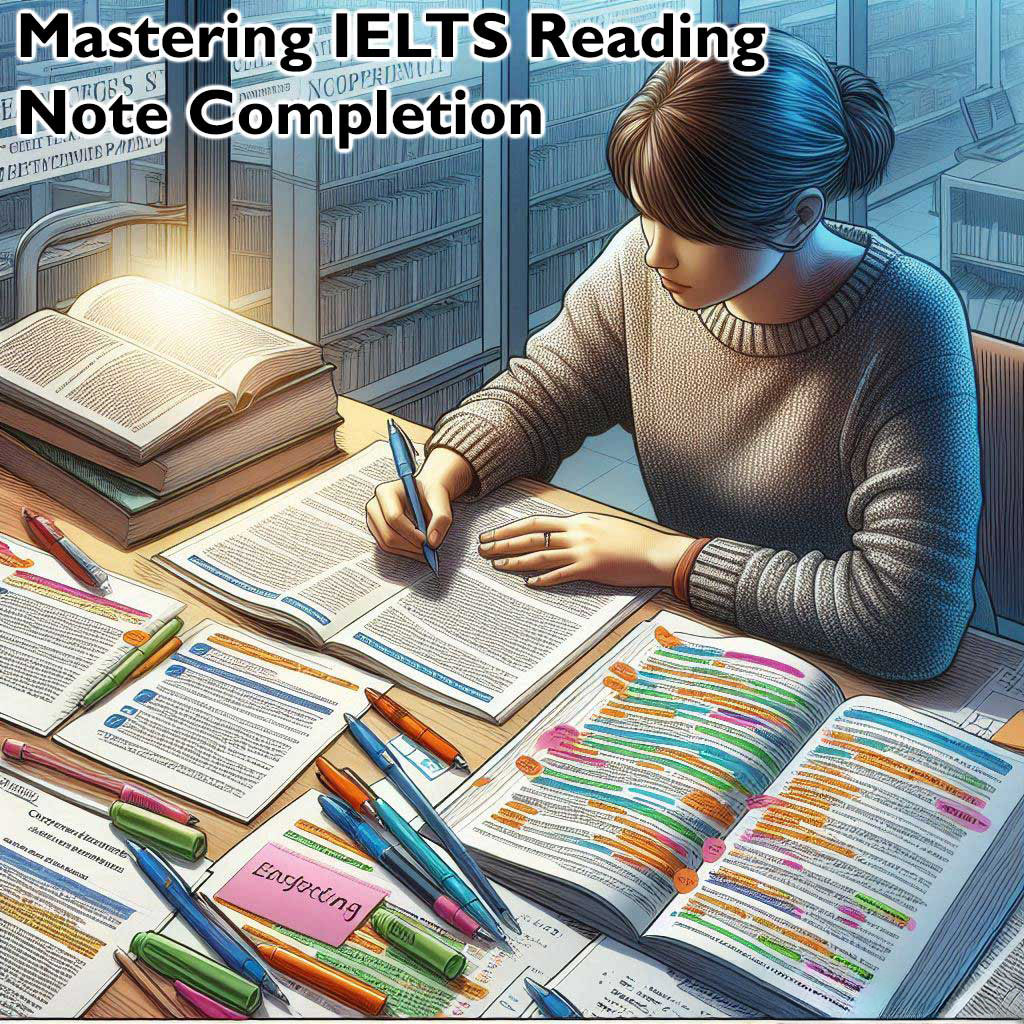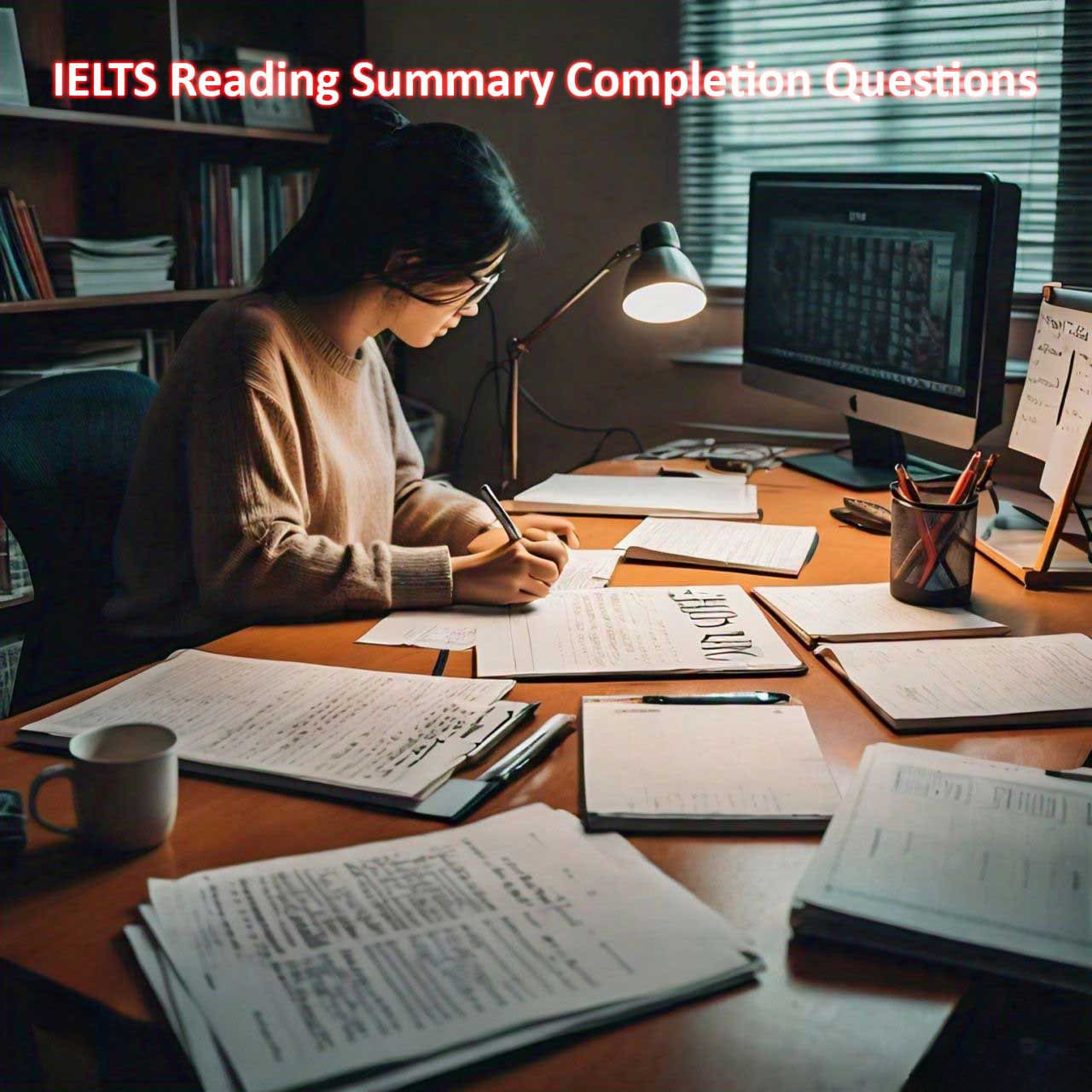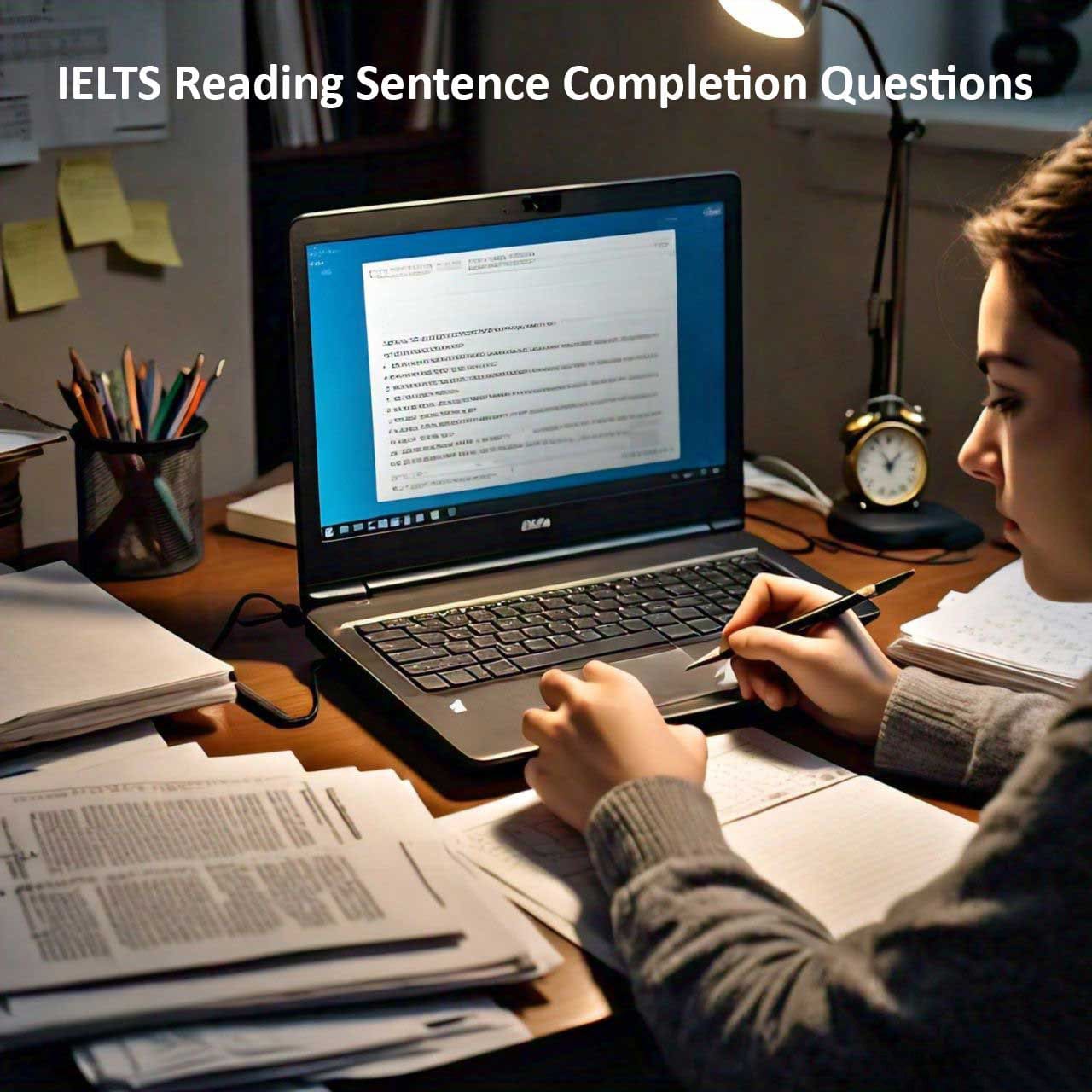The IELTS Reading section is a critical component of the test, designed to evaluate your ability to understand and interpret written English. One common question type you will encounter is “Note Completion.” This task requires you to fill in the gaps in a set of notes using information from a given text. While it may seem straightforward, success in this section requires specific strategies and a good understanding of the text. In this blog post, we’ll delve into effective techniques to tackle Note Completion questions and provide tips to boost your performance.
Table of Contents
Understanding Note Completion Questions
In Note Completion tasks, you will be given a summary, or a set of notes related to a passage. Your job is to complete these notes by filling in the blanks with appropriate words or phrases from the text. The notes usually follow the order of information in the passage, which can help you locate the answers more efficiently.
Key Strategies for Note Completion
1. Read the Instructions Carefully:
Before you begin, read the instructions thoroughly. Pay attention to the word limit for each blank (e.g., “NO MORE THAN TWO WORDS”). Exceeding the word limit will result in an incorrect answer, even if the information is correct.
2. Skim the Passage First:
Start by quickly skimming the passage to get an overall understanding of the topic and structure. This initial overview will help you locate the relevant sections more easily when you start answering the questions.
3. Identify Keywords:
In the notes, identify keywords or phrases that will help you locate the corresponding information in the passage. These keywords could be names, dates, technical terms, or specific concepts.
4. Scan for Answers:
Use the keywords to scan the passage for the relevant sections. Since the notes generally follow the order of the passage, this can make it easier to pinpoint where the information is likely to be found.
5. Pay Attention to Synonyms and Paraphrasing:
The words in the notes might not match exactly with the words in the passage. The IELTS test often uses synonyms or paraphrases. For example, if the notes say “benefits,” the passage might use “advantages.” Understanding synonyms and paraphrasing is crucial for finding the correct answers.
6. Read Around the Gaps:
When you find the relevant section in the passage, read around the gap to ensure you understand the context. This will help you choose the most appropriate word or phrase to fill in the blank.
7. Double-Check Grammar:
Ensure that the words you choose fit grammatically into the notes. A grammatically incorrect answer is likely to be wrong even if the information seems correct.
Common Pitfalls to Avoid
1. Ignoring Word Limits:
Always adhere to the specified word limit. If the instruction says, “NO MORE THAN TWO WORDS,” providing three words will automatically render your answer incorrect.
2. Overlooking Synonyms:
Failing to recognize synonyms or paraphrased information can lead to incorrect answers. Practice identifying synonyms and paraphrases to improve your skills in this area.
3. Rushing Through the Passage:
While time management is crucial, rushing through the passage without proper comprehension can lead to mistakes. Balance speed with accuracy to ensure you understand the context of the answers.
4. Misinterpreting Instructions:
Carefully read and follow all instructions. Misinterpretation can lead to avoidable errors and loss of marks.
Practice Makes Perfect
To excel in Note Completion tasks, consistent practice is key. Here are some tips to incorporate into your study routine:
1. Use Practice Tests:
Take full-length IELTS practice tests to familiarize yourself with the format and timing. Focus on Note Completion questions to hone your skills.
2. Expand Your Vocabulary:
A broad vocabulary will help you recognize synonyms and understand complex texts. Regularly read diverse materials such as newspapers, academic journals, and books to expand your vocabulary.
3. Analyze Your Mistakes:
Review your practice test answers, especially the ones you got wrong. Analyze why you made the mistakes and understand how to avoid them in the future.
4. Time Yourself:
Practice under timed conditions to improve your speed and accuracy. This will help you manage your time effectively during the actual test.
Conclusion
Mastering Note Completion questions in the IELTS Reading section requires a combination of strategic reading, understanding of synonyms and paraphrases, and careful attention to instructions. By implementing the strategies discussed in this blog post and consistently practicing, you can enhance your performance and increase your chances of achieving a high score. Remember, the key to success is a blend of comprehension, vocabulary, and test-taking skills. With dedication and the right approach, you’ll be well on your way to acing the IELTS Reading section.



